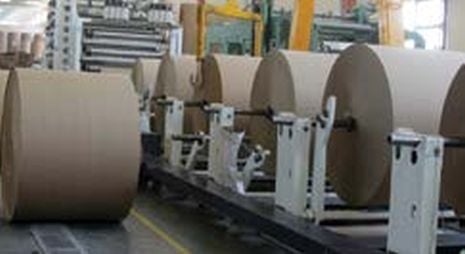 Paper Manufacturing Courses
Paper Manufacturing Courses

Comprehensive Format:
Comprehensive videos and figure based visuals presented by subject matter experts.
Paper Coating Technology
- Printing methods for coated grades of paper and board, impact of pigment selection, chemistry and properties of starch and protein binders, materials and equipment.
Paper Machine Optimization
- Intermediate in scope, designed for more experienced operators. Topics concentrated on Wet End operations and Pressing & Dry End Operations.
Paper Manufacturing Technology
- A comprehensive overview of papermaking technology, process variables, equipment, and terminology.
Paper Properties & Testing Labs
- These labs and videos demonstrate procedures used to test paper and board.
- They will also provide some background about the property being tested. The overall learning objective is to increase understanding of what the tests are telling us.
Wet End Chemistry
- Papermaking materials, including fillers and chemical additives and how chemicals are used to control product attributes and improve process efficiency.
Concise Format:
Concise narrated animation of components and processes.
Broke Systems
- "Broke" refers to partly or fully manufactured paper or board that is discarded from paper or board making, converting, and finishing processes. It also refers to the stock made by repulping these materials.
- This course includes modules on Broke Cleaning and Screening, Broke Repulpers, Broke System Inventory Management, and Under-Machine Repulpers.
Chemical Additives
- Chemical additives are used in the papermaking process for many different reasons, and they are often divided into two groups. Functional chemicals directly improve properties of the sheet, while process chemicals affect operations on or near the paper machine.
- This course includes modules on Starch Cooking and Wet End Chemistry.
Converting
- The converting process is a series of discrete operations which "convert" large parent rolls into consumer-sized units of saleable product.
- This course includes modules on Sheeting of Paper, Palletizing, and Paper Ream Packing.
Dry End Equipment
- The dryer section, calender section, coater section, and reel section are all considered to be part of the "dry end" of the machine. This course includes modules on Calendering, Carrier Ropes, QCS Scanners, Paper Coating, Reel Systems, Tail Threading, and Web Guiding and Spreading.
Finishing
- Once the finished paper comes off the dry end of the paper machine, it is typically wound into parent rolls and prepared for shipping or converting.
- This course includes modules on Winding, Pulp Drying and Baling, and Roll Handling and Wrapping.
Forming
- The forming section of the paper machine is where the sheet is formed.
- This course includes modules on Forming Fabrics, Fourdriniers, Twin-Wire Formers, Sheet Formation, and Wet Edge Control.
General Papermaking
- This course includes modules on general papermaking processes, as well as Doctor Blades, Safety, and Steam Theory.
Headboxes
- The headbox distributes the furnish evenly onto a continuously moving fine-mesh screen.
- This course includes modules on Air-Padded Headboxes, Hydraulic Headboxes, and Stock Jet Geometry.
Paper Machine Auxiliary Systems
- This course includes modules on Auxiliary Systems in the Paper Machine process, such as Hydraulic Systems, Lubrication Systems, Drives, and Vacuum Systems.
Paper Machine Dryers
- After pressing, the sheet transfers to the dryer section. In this section, heat is applied to the sheet by a series of steam-heated dryer cans or cylinders for final water removal. Woven dryer felts are often used to hold the sheet against the cans to improve heat transfer and control sheet shrinkage.
- This course includes modules on Dryer Felts, Alternative Drying Systems, Cascade Steam Systems, Dryer Hoods, Size Presses and Thermocompressor Steam Systems.
Paper Properties and Testing
- This course includes modules on paper and board Physical Tests, Optical Tests, Strength Tests, and Process Testing.
Stock Approach
- The stock approach system follows stock preparation, and it is responsible for supplying a clean, steady, consistent flow of dilute stock to the headbox.
- This course includes modules on Centrifugal Cleaners, Deaeration, Thin Stock Screening, and Thin Stock System Design.
Stock Preparation
- Stock preparation is where the papermaking process begins. In this system, the fibers are blended together, refined, diluted, and metered to the machine. Some additives are also added.
- This course includes modules on High Consistency Refining, High Density Cleaners, Refining, Thick Stock System Design, and pH and Consistency Control.
Storage and Shipping
- Once the finished paper is wound on to parent rolls and wrapped, it can be stored and shipped.
- This course includes modules on Preventing Paper Roll Damage, Storage and Tracking, Truck Trailer Loading, and Railcar Loading.
Wet Pressing
- The press section receives the formed sheet and continues the water removal process using a combination of nip pressure and vacuum; it also compresses and consolidates the sheet. This must all be done uniformly across the machine width, without damaging the sheet.
- This course includes modules on Felt Cleaning and Conditioning, Suction Rolls and Roll Covers, Roll Presses, Shoe Presses, Steam Boxes, and Wet Pressing Theory.
White Water and Filtrate Systems
- The purpose of a white water system is to collect and reuse as much white water as possible in order to recover valuable resources, while minimizing fresh water usage and effluent flows.
- This course includes modules on DAF Systems, Strainers and Filters, Circulation Loops, Clarification, and White Water Sytem Design.
Online Training available for Individual Users as well as Company Licenses. Choose to purchase a complete course or a specific topical course module. For more information contact Jana Jensen, Press Manager at jjensen@tappi.org
